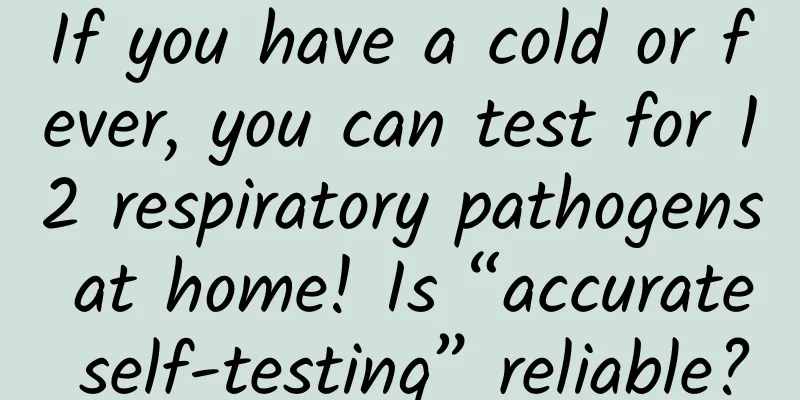There are many reasons for toothache. Learn about pulp disease and periapical periodontitis!

|
Author: Huang Dingming, Chief Physician, West China Hospital of Stomatology, Sichuan University Member of the Professional Committee of Endodontics of the Chinese Stomatological Association Reviewer: Hou Benxiang, Chief Physician, Beijing Stomatological Hospital, Capital Medical University Deputy Secretary General of the Chinese Stomatological Association Endodontic disease and periapical periodontitis are different stages of the same disease. If the disease is confined to the inner part of the tooth, that is, the pulp tissue, it is called endodontic disease. If pulp disease is not treated and handled in time, it may cause pulp necrosis, further affecting the periapical tissues of the teeth, thus forming periapical disease. According to epidemiological surveys, the incidence of pulp and periapical diseases in my country has reached as high as 50 to 60 percent. The main symptom of pulp disease and periapical periodontitis is pain. 1. What are the causes of pulp disease and periapical periodontitis in adults? The most common and core cause of adult pulp disease and periapical disease is bacterial infection. There are hundreds of types of bacteria in the mouth, and a large number of bacteria are also colonized in the oral saliva. If the integrity of the tooth surface is destroyed, the bacteria in the mouth will infect the pulp tissue through the dentinal tubules inside the hard tissue of the tooth. The most common cause of pulp and periapical diseases clinically is caries, which is what ordinary people call "cavities". Caries can destroy the integrity of the tooth surface. The dentinal tubules located inside the hard tissue of the tooth provide a channel for bacteria to enter the pulp tissue. This is the most common way to cause pulp and periapical disease clinically. Another reason is trauma. For example, if you accidentally break a tooth while playing basketball, riding a bicycle, or walking carelessly, the dentin is exposed, which also provides conditions for bacteria to enter the pulp tissue and cause pulp infection. If the patient has severe periodontal disease, a large number of microorganisms colonized in the periodontal pocket will retrogradely enter the pulp tissue from the lateral root canals and apical foramen on the sides of the teeth, causing pulp infection and thus forming pulp and periapical disease. 2. What are the clinical manifestations of pulp disease and periapical periodontitis? The main clinical manifestations of pulp disease and periapical periodontitis are pain and discomfort in chewing. In the early stage of pulp infection, the affected tooth will experience short-term pain and discomfort when exposed to cold water or cold air. As the infection continues, pulp inflammation continues to worsen, and the patient will experience severe pain when exposed to cold water, which will involve half of the head, excruciating pain, and insomnia. The pulp inflammation is further aggravated, and the pain of the affected tooth is aggravated and continuous when it is stimulated by hot water. At this time, the pain can be relieved by holding cold water or ice water in the mouth. It is common in clinic that toothache patients hold a cup of ice water in their hands and rinse their mouths with ice water while walking. In the later stages of the disease, it may cause jaw infection, facial swelling, and repeated pus discharge from the gums. In essence, it is an inflammatory disease caused by bacterial infection of the periapical tissue of the dental pulp. Figure 1 Original copyright image, no permission to reprint 3. Will pulp disease and periapical disease cause bad breath? There are many reasons for bad breath, among which pulp and periapical disease is the main cause of bad breath. Tooth pulp and periapical disease is actually a bacterial infectious disease. Bacteria decompose proteins and sugars in food in the caries cavity, which may produce some ammonia molecules and cause bad breath. Figure 2 Original copyright image, no permission to reprint In addition to pulp and periapical diseases, bad breath is also related to the patient's lack of attention to oral hygiene. If you do not rinse your mouth or brush your teeth after eating, the food residue in your mouth can also be decomposed by bacteria colonized in the mouth, thus producing bad breath. In addition, periodontal disease can also cause bad breath. Periodontal disease is also a bacterial infection disease caused by specific pathogenic bacteria, mainly anaerobic bacteria, which can decompose proteins and produce some odor molecules, thus causing patients to have bad breath. In addition, systemic health conditions, such as diabetes and kidney disease, may cause the exhaled gas to have an odor. 4. How to detect adult pulp disease and periapical periodontitis early? Clinically, the most common way to cause dental pulp infection is caries. Usually, you can visually see the color change of the tooth surface, such as chalky white in the early stage, the texture gradually softens, and a hole gradually forms on the tooth surface until the integrity is destroyed and eventually the tooth rots into the inside. Figure 3 is an original copyrighted picture and is not authorized for reproduction There are a large number of bacteria and other microorganisms colonizing these cavities. If you pay more attention to your dental health and see a doctor before the pulp is affected, the doctor will remove the carious tissue, eliminate the infection, and use materials to tightly seal the defective part of the tooth to prevent bacteria and microorganisms from affecting the pulp tissue. On the contrary, if you do not pay attention to your dental health and think that it does not matter if there is one missing piece, then caries will continue to destroy the tooth tissue, and as caries progresses, it gets closer and closer to the pulp tissue, and the patient will experience some symptoms, such as feeling a little uncomfortable when eating cold, hot, sour, or sweet food; when chewing food, food enters the caries cavity and causes pain. At this time, if you can see a doctor as soon as possible and eliminate the pulp disease at this stage, you can also preserve healthy pulp tissue. If caries has caused slight pain or discomfort in the affected tooth, but the patient still does not see a doctor, if caries progresses further, the bacteria in the mouth and the caries cavity may directly enter the pulp tissue, causing inflammation, swelling and necrosis of the pulp tissue. The outer layer of the pulp tissue is surrounded by a layer of hard tooth tissue. When the pulp tissue becomes inflamed, it will cause tissue edema, increased pressure, and compress the nerves in the pulp tissue. At this time, the affected tooth will experience severe pain, and sometimes it will involve facial pain on the same side and involve the ears and other parts. Therefore, "toothache is not a disease, but it can be fatal" refers to this stage. 5. How to prevent pulp disease and periapical periodontitis in adults? If you pay attention to oral hygiene, have regular check-ups, and effectively control and treat caries in the early stages, you can prevent the disease from developing and avoid pulp and periapical diseases. However, many ordinary people do not know the importance of early prevention and early treatment. They often go to the hospital for treatment only after they feel pain and discomfort in their teeth. At this time, the pulp tissue has often been affected and endodontic treatment is needed. Therefore, early prevention and early treatment of pulp disease and periapical periodontitis are very important, and everyone must pay great attention to it! |
<<: Does teeth cleaning hurt? What should I pay attention to after teeth cleaning?
>>: The last resort to save "bad teeth" - intentional tooth replantation
Recommend
Does “cancer constitution” really exist?
Some time ago, a report about a 65-year-old woman...
By the way, how long does it take for lochia to be clean?
Postpartum lochia will occur after giving birth. ...
Shaving your legs with an eyebrow razor
The hair on my legs is so long and I want to shav...
Can I eat vinegar during menstruation?
Aged vinegar is very common. There are different ...
Can pregnant women eat street tofu pudding?
Various flavors of old tofu are loved by many peo...
How do uterine polyps form?
In life, many women suffer from uterine polyps. I...
What are the methods to relieve bleeding after abortion surgery?
Abortion is an act that is harmful to our body. A...
Can I hold my baby during confinement?
During the confinement period, many mothers like ...
How to make a woman's vagina tighter
For many women, their vaginas become very loose a...
Will toothache during confinement cause a serious illness?
As the saying goes, toothache is not a disease, b...
What to do if breast hyperplasia and inflammation occur?
Have you ever heard of the disease of breast hype...
What should be paid attention to in the care of the incision after cesarean section
As we all know, both cesarean section and natural...
Is it normal to stop having periods at the age of 48?
We know that every woman will experience her firs...
Will high uric acid damage the kidneys? You will understand after reading this!
Many people think that occult blood in urine mean...
The process of seeing red in early pregnancy
Generally speaking, if a pregnant woman enters th...









